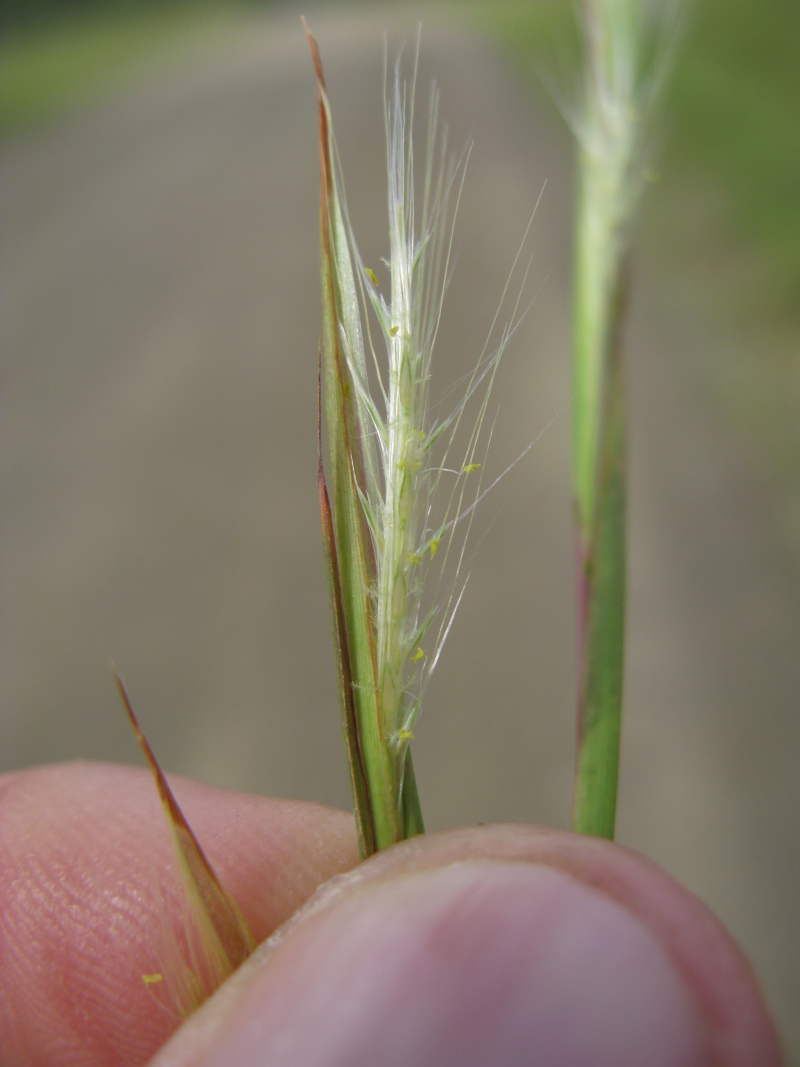
Whisky Grass (Andropogon virginicus)
© Harry Rose
Introduced, warm-season, perennial, erect, tufted grass to 120 cm tall; tinged with red-purple when young, becoming tawny-bronze at maturity. Flowerheads are long, narrow spatheate panicles that pull apart easily when young. Spikelets are paired, 2-flowered, 3 mm long and awned; 2 hairy branches are attached to each awned spikelet. Flowers in autumn. Found on low fertility (especially low phosphorus) soils such as granites. Occurs along roadsides and in pastures, often where there has been some form of disturbance (e.g. cultivation or burning). Poor quality species that can dominate pastures on low fertility soils and where grazing pressure is light or absent. An indicator of low fertility soils and low grazing pressure. Mainly spread by wind or slashing of seeding plants. However, regular close slashing in February, March and April will help reduce plant abundance. Abundance declines with increased fertility as it is unresponsive to fertiliser and other species become more competitive. Abundance declines with increased grazing pressure as it has high growing points which are susceptible to trampling and grazing.
Photo taken on 14 Mar 2012
Photograph location coordinates are -30.888561:153.0684.